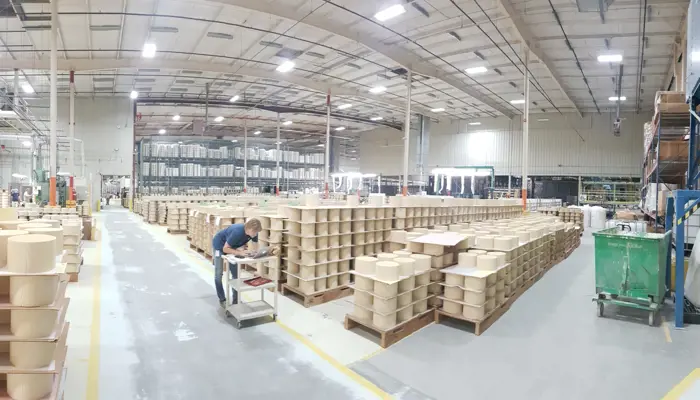INFORMAZIONI SUL TRATTAMENTO DEI DATI PERSONALI
A seguito della consultazione del sito possono essere trattati dati relativi a persone fisiche identificate o identificabili.
Ai sensi del Regolamento (UE) 2016/679 (di seguito "Regolamento"), questa pagina descrive le modalità di trattamento dei dati personali degli utenti che consultano il sito web https://www.servizimprese.tn.it.
Le presenti informazioni non riguardano altri siti, pagine o servizi online raggiungibili tramite link ipertestuali eventualmente pubblicati nel sito.
TITOLARE DEL TRATTAMENTO E RESPONSABILE DELLA PROTEZIONE DEI DATI
Titolare del Trattamento è Servizi Imprese C.A.F. S.r.l. con sede a Trento in via Solteri 78. L’interessato può esercitare i diritti di seguito indicati ed ottenere ulteriori informazioni rivolgendosi al Titolare all’indirizzo e-mail: privacy@servizimprese.tn.it.
Responsabile Della Protezione Dei Dati (RPD/DPO) è la dott.ssa Federica Ziglio, con studio in Trento, 38122, via Mazzini n. 14/M (telefono: 0461/261768 - mail: info@ziglioassociati.it - pec: dpo@pec.servizimprese.tn.it).
TIPO DI DATI TRATTATI, FINALITÀ DEL TRATTAMENTO E RELATIVA BASE GIURIDICA
|
TIPOLOGIA DI DATI TRATTATI
|
FINALITÀ DEL TRATTAMENTO
|
BASE GIURIDICA DEL TRATTAMENTO
|
|
Dati di navigazione (impostazioni lingua, indirizzo IP, impostazioni del dispositivo, sistema operativo per dispositivi mobili, informazioni sul login, tempo di utilizzo, richiesta URL, informazioni sullo stato, user agent (informazioni sulla versione del browser), sistema operativo, tipologia di dati visualizzati. Il sito web potrebbe anche raccogliere i dati automaticamente attraverso i cookie, si veda in proposito l’apposita informativa).
|
Gestire la navigazione all’interno del sito web e gestione tecnica dei servizi forniti nonché consentire analisi, verificare il numero di visitatori e garantire la sicurezza e ottimale funzionalità del sito stesso e della navigazione/servizi per gli utenti
|
La base giuridica del trattamento è l’interesse legittimo del titolare a garantire la sicurezza e l’ottimale funzionalità del sito nonché a tutelare i propri diritti.
|
|
Dati identificativi e di contatto forniti volontariamente dall’Interessato tramite gli appositi form, per l’utilizzo dei servizi offerti dal sito web, dati di terzi forniti dall’interessato sotto la propria responsabilità.
|
Rispondere ad eventuali richieste di informazioni da parte degli interessati e/o fornire i servizi richiesti da questi ultimi.
|
La base giuridica del trattamento è l'esecuzione di misure adottate su richiesta dell’Interessato, l’esecuzione di un contratto di cui l’Interessato è parte o di misure precontrattuali adottate su richiesta dello stesso.
|
FACOLTATIVITÀ DEL CONFERIMENTO DEI DATI
A parte quanto specificato per i dati di navigazione (cookie), l’Interessato può fornire i dati personali riportati nei moduli di richiesta del sito web (form), ad esempio per richiedere l'invio di materiale informativo, o di comunicazioni e/o risposte alle richieste inviate tramite il sito web. Il conferimento dei dati è facoltativo, sebbene il mancato conferimento comporta l'impossibilità di ottenere il servizio e/o le informazioni richieste.
COOKIE E ALTRI SISTEMI DI TRACCIAMENTO
Per la politica sui cookie si veda l’apposita cookie policy presente sul sito.
DESTINATARI DEI DATI
Potranno accedere, e quindi venire a conoscenza dei Suoi dati, esclusivamente i soggetti autorizzati dal titolare limitatamente ai dati necessari a svolgere il proprio incarico.
Ferme restando le comunicazioni eseguite in adempimento di obblighi di legge e contrattuali, tutti i dati raccolti ed elaborati potranno essere comunicati esclusivamente per le finalità sopra specificate a:
- Soggetti autorizzati dal titolare del trattamento (collaboratori, tirocinanti e dipendenti);
- Responsabili del trattamento e/o collaboratori esterni del titolare (es. consulenti legali, informatici, fornitori di servizi correlati all’attività del sito web, ecc.);
- Soggetti pubblici e privati a cui la comunicazione sia dovuta per legge o regolamento;
- Soggetti che svolgano attività funzionali all’esecuzione dei contratti o servizi richiesti dall’Interessato che tratteranno i dati in qualità di autonomi titolari del trattamento.
I Suoi dati non saranno diffusi.
TRASFERIMENTO DI DATI
I Dati potranno essere trasferiti all’estero solo nel caso in cui il titolare decidesse di avvalersi di servizi informatici (sito web, posta elettronica, servizi cloud) gestiti da fornitori residenti in paesi al di fuori della Comunità Europea o che utilizzino server ubicati in paesi esteri. Il Titolare trasferirà i dati personali soltanto a destinatari che offrono un livello adeguato di protezione dei dati. In tali casi ciò avverrà sulla base di clausole contrattuali o accordi contrattuali che assicurino una protezione in linea con gli standard europei.
CONSERVAZIONE DEI DATI
I dati personali saranno conservati per il periodo di tempo necessario all'utilizzo e alla fornitura dei servizi, in conformità con le leggi vigenti, nonché allo scopo di gestire eventuali dispute con qualsiasi parte terza e in ogni caso per il tempo necessario al fine dell'espletamento delle attività incluse individuazione e prevenzione di frodi o altre attività illegali.
DIRITTI DEGLI INTERESSATI
Gli interessati hanno il diritto di ottenere dal titolare, nei casi previsti, l'accesso ai dati personali e la rettifica o la cancellazione degli stessi o la limitazione del trattamento che li riguarda o di opporsi al trattamento (artt. 15 e ss. del Regolamento). L'apposita istanza può essere presentata contattando il titolare inviando una richiesta agli indirizzi presenti su questo sito.
DIRITTO DI RECLAMO
Gli interessati che ritengono che il trattamento dei dati personali a loro riferiti effettuato attraverso questo sito avvenga in violazione di quanto previsto dal Regolamento hanno il diritto di proporre reclamo al Garante, come previsto dall'art. 77 del Regolamento stesso, o di adire le opportune sedi giudiziarie (art. 79 del Regolamento).






